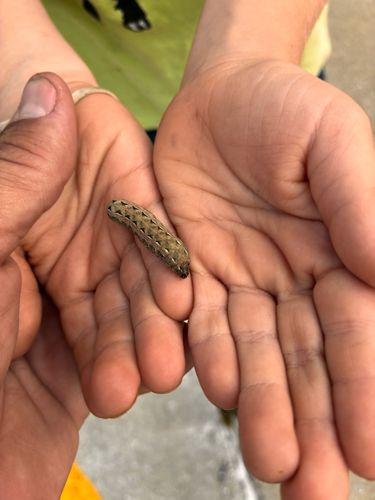Cutworm (caterpillar stage)
Scientific Name: Various species within the family Noctuidae (e.g., Agrotis, Peridroma, Feltia)
Order & Family: Lepidoptera (Moths and Butterflies), Noctuidae (Owlet Moths)
Size: (Caterpillar) 1 to 2 inches (2.5 to 5 cm) in length

Natural Habitat
Found in various agricultural fields, gardens, grasslands, and disturbed areas. They typically live in the soil or under leaf litter during the day and emerge at night to feed.
Diet & Feeding
Cutworms are polyphagous, meaning they feed on a wide variety of plants. They are significant agricultural pests, feeding on the stems and leaves of young plants, often cutting them off at the soil line. They target a broad range of crops including corn, tomatoes, cabbage, and many types of garden vegetables.
Behavior Patterns
Nocturnal feeders, cutworms curl into a C-shape when disturbed. They are most destructive to young plants, especially during the spring. The adult moths are typically nocturnal as well and are attracted to lights.
Risks & Benefits
Risks: Major agricultural and garden pests, causing significant damage to crops by cutting young plants at the soil level or defoliating them. Heavy infestations can lead to substantial economic losses. Benefits: As with many insects, they are a food source for birds, beneficial insects, and other wildlife. Adult moths can act as pollinators for some plants.
Identified on: 9/22/2025